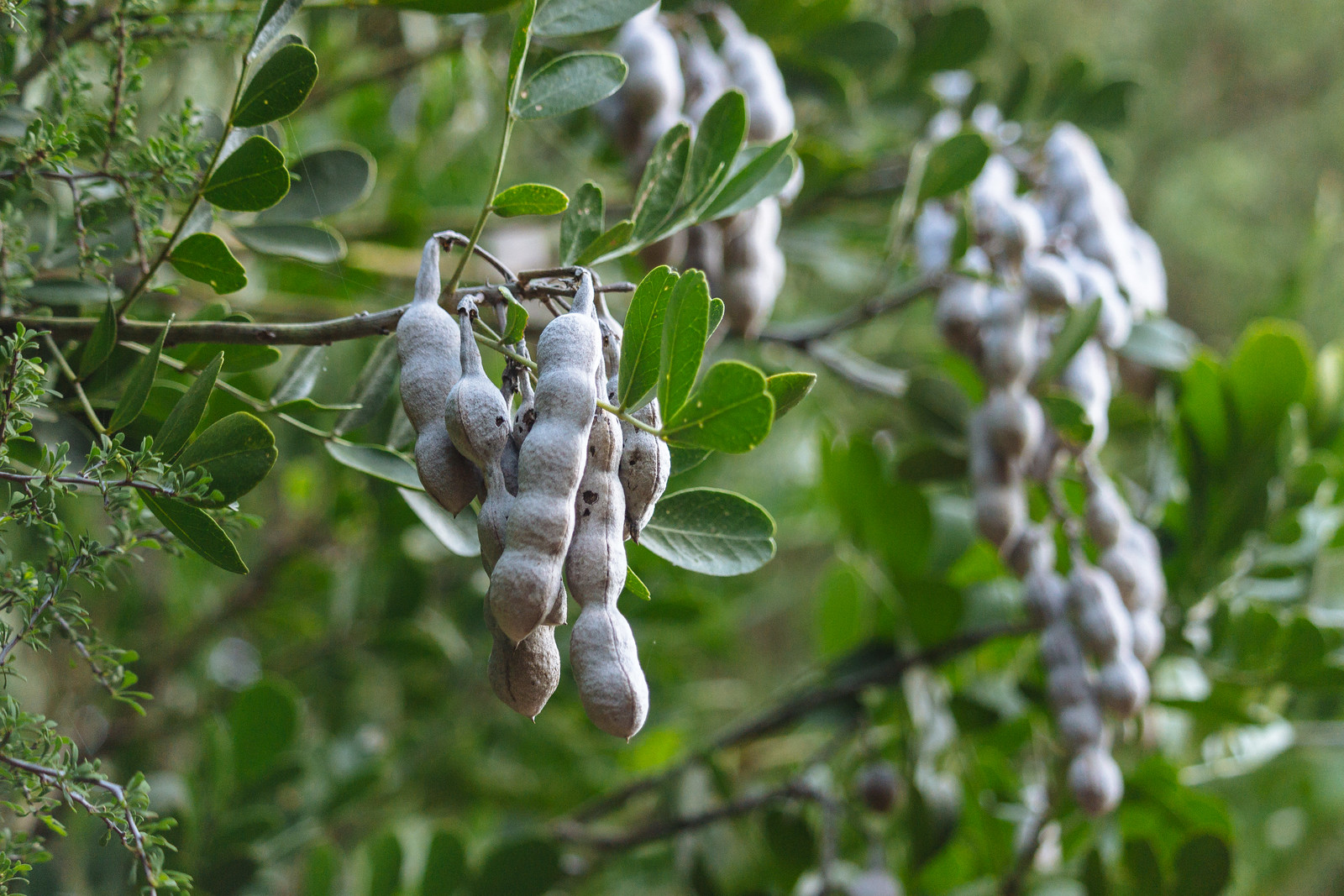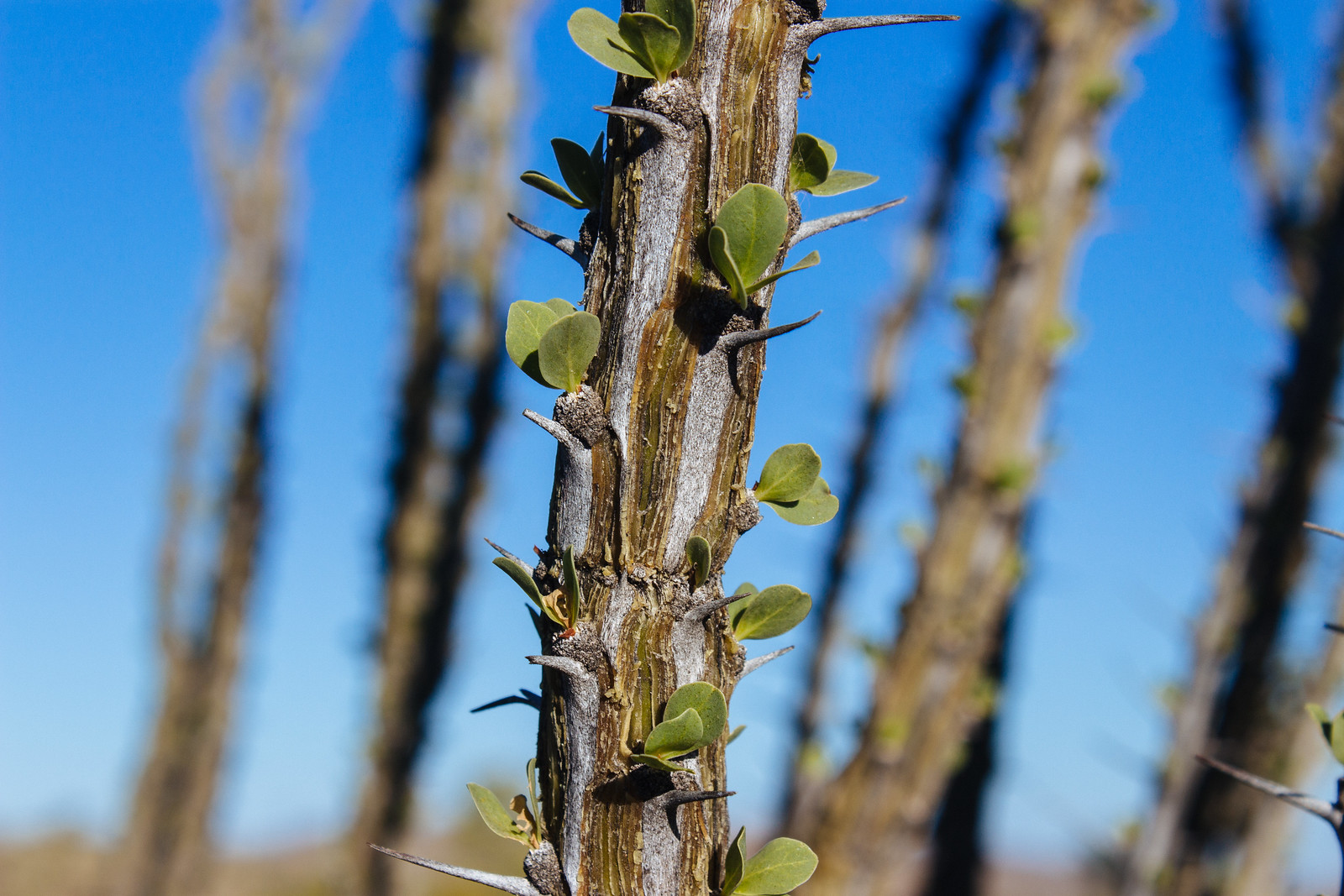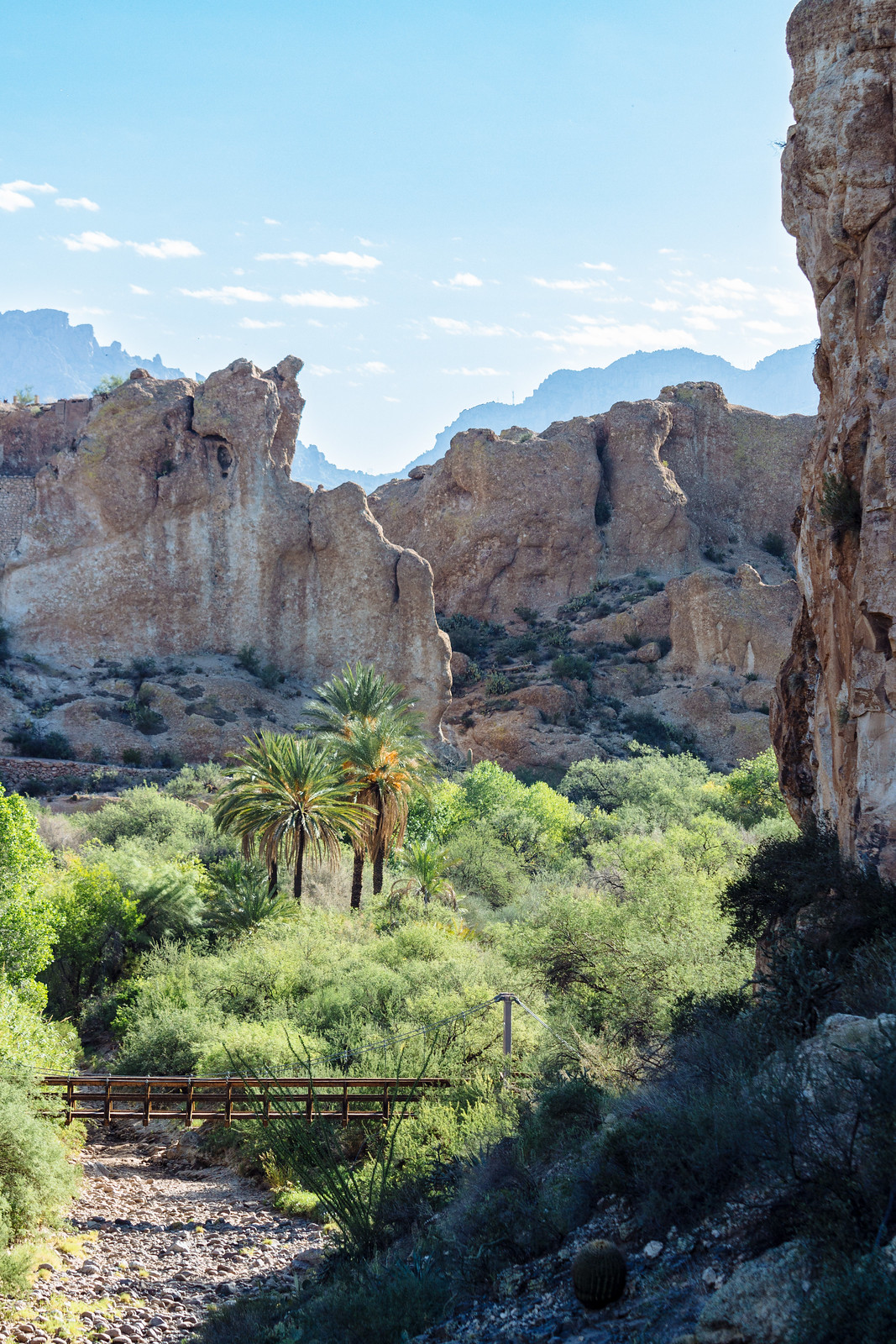I killed a jade plant within weeks of moving to Arizona three years ago.
That poor succulent never stood a chance: its pot had zero drainage, the soil wasn’t sandy enough, and, in retrospect, I was probably over-watering it. I even tried to dry it out by sticking it in the hot Phoenix sun, but that ended up burning the poor thing’s leaves.
To atone for my houseplant sins but still soak up all the whimsy and greenery that turned succulents into an interior design craze, I decided to take a daytrip a one-hour’s drive east of town to the oldest botanical garden in the state: Boyce Thompson Arboretum.
Here, I got to see tiny potted jade plants surviving—thriving, even!—as well as enormous agaves taller than I am, a menagerie of birds and butterflies, and a grove of fragrant, towering eucalyptus trees that seemed out of place in the dry, dry desert. I was hooked, and ever since that first serene visit, I’ve come back half a dozen times, bringing friends and family members to share with them why I love this arboretum.
1) It’s cool
In the desert, elevation is the name of the game if you want to avoid the heat of the summer. The arboretum sits almost 2,000 feet higher than Phoenix, so, naturally, it enjoys average temperatures that are 10 degrees lower than the state’s capital.
When that Phoenix summer heat kicks me off of my feet in late May and June, or when I just can’t take it any longer in September, I love heading out early in the morning to the arboretum to spend some time at a higher altitude, walk beneath the shade of some trees, and finally cool off.
2) It’s close by
The arboretum clocks in at just under an hour’s drive from central Phoenix—and around two hour’s drive from Tucson—putting it in perfect daytrip territory for residents of or visitors to the state’s two major metro areas.
When you need to escape the noise and the heat of the city, you can’t always just travel to San Diego, Flagstaff, or Rocky Point in Mexico on a whim. That’s why I’m grateful Boyce Thompson Arboretum is a mere 60 miles away from Phoenix: it’s ideal for a spontaneous getaway that still leaves you refreshed and back in touch with nature.
3) It’s quiet
I don’t know about y’all, but the apartments I’ve lived at in Arizona the past four years have not been in quiet neighborhoods. From living right next door to the airport in Tempe, to living in downtown Phoenix surrounded by highways and outdoor concerts, I’ve found myself in high-decibel environments for a while now.
Boyce Thompson Arboretum has been so restorative for me because, at least when they open first thing in the morning, no one else is on the trails and I get this oasis in the desert all to myself. No airplanes roaring overhead, no children screaming, no sports cars or pickup trucks with loud mufflers rumbling by…just me and a slice of the Sonoran Desert.
U.S. Route 60 was recently expanded and rerouted away from the park boundaries, so traffic noise is much lower than it used to be. This allows you to rest in solitude and take in the sounds of the Sonoran Desert: the trickling water of Queen Creek over a pebble-strewn creek bed, the perky, bright songs of cardinals, or the modem-like squeaking of hummingbirds. Listen closely enough, and you might even hear a butterfly flap its wings.
4) It shows off the Sonoran Desert
Hiking in the wilderness is fun, but all the curated specimens with labels and informative plaques at Boyce Thompson Arboretum really help to illuminate the richness of the Sonoran Desert. But this desert is a vast one, and depending on the elevation, you can find a different collection of succulents and critters. Compared to the plain creosote flats of the lower desert, the hillsides at Boyce Thompson are studded by the saguaro cactuses that are so emblematic of Arizona. What’s more, plentiful water from Queen Creek truly makes the arboretum a lush oasis where all sorts of plants and animals can flourish.
Near the entrance, there’s a fabulous cactus greenhouse and garden that protects cactuses and other succulents not just from the Sonoran Desert, but also from South America and Africa. I make a beeline for this peaceful greenhouse first thing on morning visits and hang out with the aloes and agaves as sunlight slowly enters through the glassed-in walls.
5) It’s got history
In one of the youngest states in the country, and in a state that loves to tear down old buildings, Boyce Thompson Arboretum is a precious place for the history it preserves. Not only is it the oldest botanical garden in Arizona—founded 100 years ago by the eponymous William Boyce Thompson, a mining magnate who owned the Magma Mine down the road in Superior—it also preserves his historic Picket Post House on a hill that overlooks the entire park.
The arboretum’s long history as an institution insulated it from the effects of the Great Recession, when many Arizona state parks were shuttered due to the state legislature’s austere budget cuts. The arboretum doesn’t receive any funds from the state; instead, it’s managed by the non-profit Boyce Thompson Southwestern Arboretum, Inc. and belongs to the Arizona State Parks system.
6) It’s home to a variety of ecosystems
Sure, the arboretum focuses on the surrounding Sonoran Desert, but there’s so much more to experience here, including exhibits on the Chihuahuan Desert of New Mexico, Texas, and the Mexican state of Chihuahua, to the deserts of South America. You can even stroll through a grove of giant, soaring eucalyptus trees and feel transported to the forests of Australia.
Whether you fall in love with the local species you come across in the gardens or you have been dreaming up a trendy succulent garden, you’ll love the plant shop by the arboretum’s entrance. Plan your visit around seasonal sales and your front yard or back patio will remind you of this special place in the high desert every time you step outside.
7) It’s a habitat for tons of wildlife
Bring some binoculars or your camera’s zoom lens to get a better look at all the butterflies, moths, and birds that gather at Boyce Thompson Arboretum. The demonstration garden is a magical place in the fall—you can see tame Pipevine Swallowtail butterflies and shocking hummingbird moths—while actual hummingbirds love to hang out in the, uh, hummingbird garden year-round. Early in the morning, vultures love to warm themselves up on top of the rugged Magma Ridge, and the distinctive “birdie-birdie-birdie” call of a cardinal pierces through dense woods, even if you can’t see their bright-red coat.
Arizona is smack-dab in the middle of monarch butterfly migration routes, but at the arboretum, I’ve seen many more of the monarch’s cousin, the queen butterfly, instead.
How to get there
Boyce Thompson Arboretum is found right outside the former mining community of Superior, Arizona, nestled up beneath Picketpost Mountain.
From downtown Phoenix, take Interstate 10 east (i.e., toward Tucson) to U.S. Route 60 heading toward Mesa and Globe. Drive on this highway into the mountains for a little under an hour, then simply follow the signs that indicate where you should exit.















